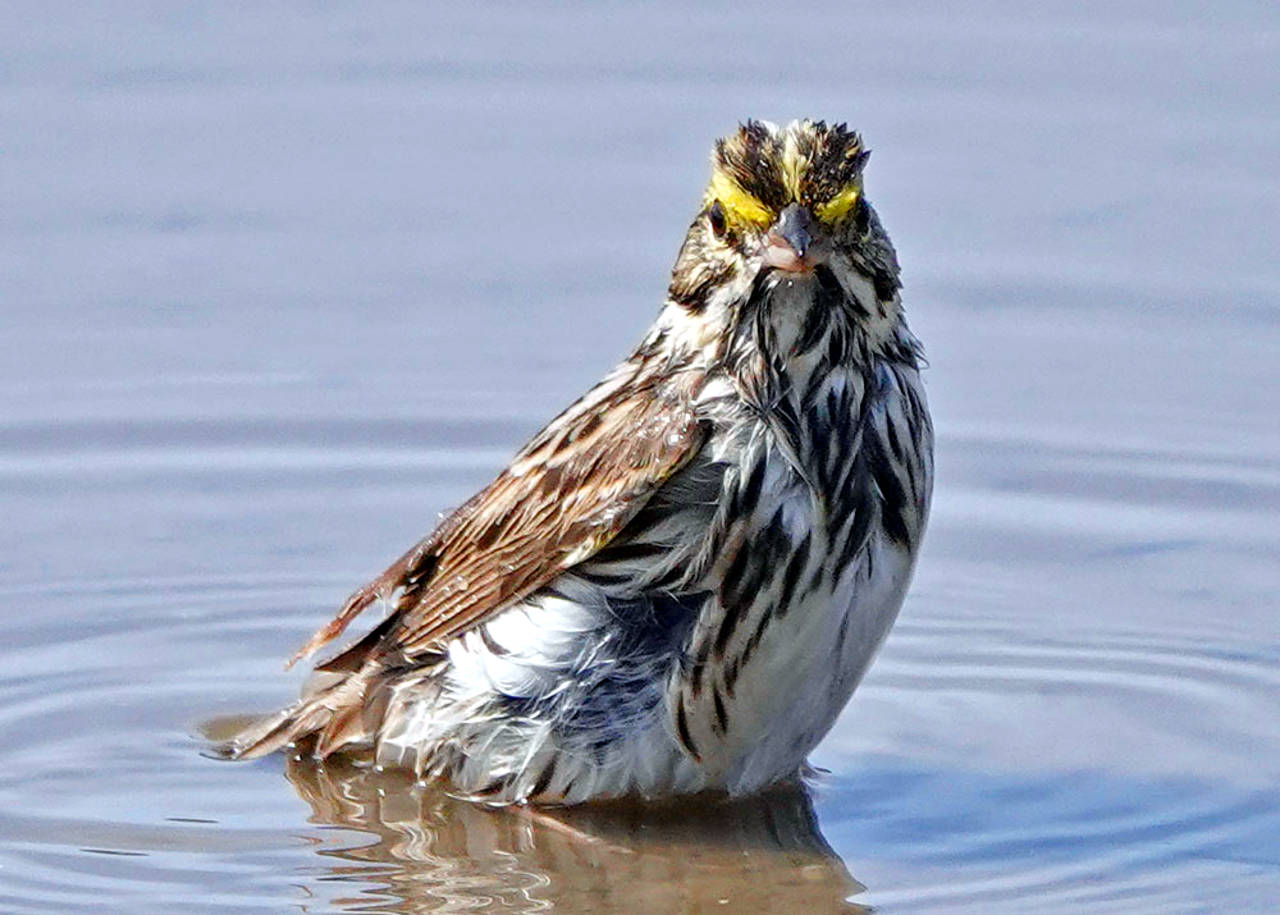I know all of you reading this have heard the phrase, “This is one of my favorite birds” before, so I may as well fess up … I really enjoy birds!
So you can understand I am excited to feature this wet little beauty — the Savannah Sparrow.
General Description: The Savannah Sparrow is the most common of Washington’s streak-breasted sparrows of the open spaces. Its plumage is highly variable across its range from coast to coast, with Western Washington breeders (Belding’s) having darker striped breasts with a light belly, a relatively short, notched tail and pinkish legs. Their backs and head are streaked and the head is brown and gray with pale yellow eyebrows. They measure four point three to six inches in length, with a wing span of eight to 8.7 inches, and weighing one-half to one ounce.
Habitat: Savannah Sparrows breed in open habitat with low vegetation, such as farmland, open fields and pastures and grassy coastal dunes. They can even be found along the edges of roads adjacent to farms.
Behavior: Savannah Sparrows are ground feeders, foraging in small groups, often running and hopping as they feed. They don’t stay still often. They are more likely to sing from fence posts and wires in full view, not shy at all. The male performs a flight display during breeding season, flying just over the tips of the grass with his tail raised and his feet dangling. His song is irresistible.
Diet: These sparrows eat more insects during the breeding season for the protein they provide for both themselves and their growing young. They supplement the insects with seeds in the summer, then switch to seeds and berries for fall and winter. Coastal birds also add crustaceans and mollusks.
Nesting: The male sings to attract a mate and defend his territory but may have more than one family. The female builds the nest in dense old grasses on the ground or in low shrubbery. The outer layer is made of course grass with the inner cup made of finer grasses. The female incubates four to six eggs for ten to thirteen days. Both parents brood and feed the young until they leave the nest at ten to twelve days of age. The fledglings run well but can’t fly well for another week. Both parents feed and tend the young until they are about three weeks old. If the mated pair lives, they may re-connect next season.
Migration: Most Savannah Sparrows migrate, flying at night and spending the winter in the southern United States and even as far south as Central America. They arrive in Washington in mid-March and don’t leave until mid-October.
Conservation Status: Breeding Bird Surveys show a small increase in the numbers of Savannah Sparrows in our region. This is probably due to the continued clearing of forest and increased intensity of agriculture, a good thing for a change for this bird.
When and Where to Find on Grays Harbor: When I looked at the distribution map for these birds I was struck by their tendency to hang around in river valleys, in the weeds and fences along the rivers and the riverside properties. Anyplace along the Monte-Brady Loop, next to the roadsides in farm country, the brush and gravel around sewage treatment ponds, and of course in our wonderful parks and wildlife areas. It’s a pretty little bird with lots of pizzazz and easy to find. Just go outside.


